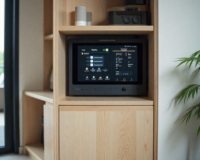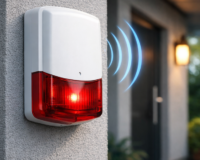The rise of internet protocol (IP) technology has revolutionized communication and security systems, and intercoms are no exception. IP-based intercom systems are quickly becoming the preferred choice for residential, commercial, and industrial settings due to their versatility, scalability, and advanced features. This article will delve into what IP-based intercom systems are, how they work, their advantages, potential drawbacks, and best practices for implementation.
What is an IP-Based Intercom System?
An IP-based intercom system uses internet protocol to transmit audio and video signals over a network. Unlike traditional analog intercoms that rely on dedicated wiring, IP intercoms connect to a local area network (LAN) or wide area network (WAN) to facilitate communication. This connectivity allows for integration with other IP-based systems, such as security cameras, access control, and alarm systems, creating a unified and more efficient security solution.
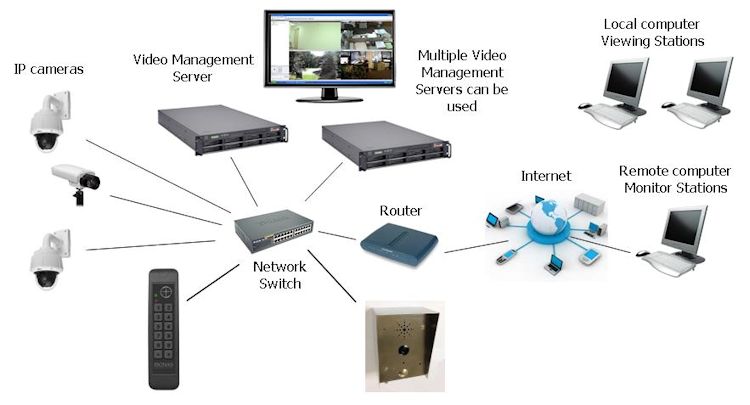
How Do IP-Based Intercom Systems Work?
IP intercoms convert audio and video signals into data packets that are transmitted over the network to other devices within the system. Each device, such as an intercom station or a video doorbell, is assigned an IP address, which allows it to communicate with other devices on the network. The data packets are sent to their destination using this IP address, where they are converted back into audio and video signals.
This system’s reliance on network infrastructure means that it can be easily expanded or modified. Adding new devices, integrating with other systems, or making changes to the network can be done without the need for extensive rewiring, making IP intercoms a flexible and scalable solution.
Advantages of IP-Based Intercom Systems

IP-based intercom systems offer several advantages over traditional analog systems, making them an attractive option for various applications. Here are some of the key benefits:
1. Scalability
One of the most significant advantages of IP-based intercom systems is their scalability. Whether you’re managing a small office or a large multi-building campus, IP intercoms can be easily expanded to meet your needs. New devices can be added to the network with minimal effort, and the system can grow as your organization does.
- Easy Expansion: Since IP intercoms operate over a network, expanding the system involves simply connecting new devices to the existing network. This eliminates the need for additional wiring or significant changes to the infrastructure.
- Integration with Other Systems: IP-based systems can integrate seamlessly with other IP-based systems, such as security cameras, access control, and alarm systems. This allows for a more comprehensive and unified security solution that can be managed from a single interface.
2. Advanced Features
IP intercoms offer a wide range of advanced features that are not available with traditional analog systems. These features enhance the functionality and security of the system, making it more versatile and effective.
- Video Capabilities: Many IP intercoms come with built-in cameras, allowing users to see who is at the door or communicating with them. This is particularly useful for security purposes, as it enables visual verification before granting access.
- Remote Access: IP-based intercom systems can be accessed remotely via smartphones, tablets, or computers. This allows users to monitor and control the system from anywhere with an internet connection, providing greater flexibility and convenience.
- Integration with Other IP Systems: IP intercoms can be integrated with other IP-based systems, such as video surveillance, access control, and alarm systems. This allows for a more comprehensive security solution that can be managed from a single interface.
3. Improved Audio and Video Quality
IP-based intercom systems typically offer superior audio and video quality compared to analog systems. The digital transmission of signals over a network ensures that there is minimal interference, resulting in clearer communication.
- High-Definition Video: Many IP intercoms support high-definition video, providing clear and detailed images that enhance security and allow for better identification of individuals.
- Clear Audio: The digital nature of IP systems reduces noise and interference, resulting in clearer audio communication. This is particularly important in noisy environments where clear communication is essential.
4. Flexibility and Integration
IP intercom systems can be easily integrated with other technologies, such as access control systems, surveillance cameras, and building management systems. This integration allows for a more cohesive and efficient operation, as all systems can be managed from a single interface.
- Access Control: IP intercoms can be linked to access control systems, allowing users to grant or deny access remotely. This is particularly useful for managing entry points in large buildings or campuses.
- Surveillance Integration: By integrating IP intercoms with surveillance cameras, users can monitor and record interactions at entry points. This provides an additional layer of security and can be useful for investigating incidents.
5. Cost-Effectiveness
While the initial cost of IP-based intercom systems may be higher than that of analog systems, the long-term savings can be significant. The ability to integrate with existing network infrastructure reduces the need for additional wiring, and the scalability of IP systems means that future expansions can be done with minimal cost.
- Reduced Installation Costs: Since IP intercoms use existing network infrastructure, there is no need for extensive and expensive wiring. This can significantly reduce the installation costs, particularly in large buildings or campuses.
- Lower Maintenance Costs: IP intercom systems are easier to maintain and troubleshoot. Many issues can be resolved remotely, reducing the need for on-site technicians and minimizing downtime.
Potential Drawbacks of IP-Based Intercom Systems

While IP-based intercom systems offer many benefits, they are not without their potential drawbacks. It’s important to consider these factors when deciding whether an IP intercom system is the right choice for your needs.
1. Dependence on Network Infrastructure
IP intercom systems rely heavily on the quality and reliability of the network infrastructure. If the network is slow, congested, or prone to outages, it can negatively impact the performance of the intercom system.
- Network Vulnerability: IP intercom systems are susceptible to network issues, such as latency, bandwidth limitations, and outages. A weak or unstable network can result in poor audio and video quality, or even complete loss of communication.
- Security Risks: Like all networked systems, IP intercoms are vulnerable to cyberattacks. Without proper security measures, such as encryption and firewalls, unauthorized users could potentially gain access to the system.
2. Higher Initial Costs
The initial investment for an IP-based intercom system can be higher than that of a traditional analog system, particularly if the existing network infrastructure is inadequate or requires significant upgrades.
- Upfront Investment: IP intercom systems often have higher upfront costs due to the need for network infrastructure, advanced features, and integration capabilities. However, these costs can be offset by the long-term benefits and savings.
- Training Requirements: Users may require training to understand how to operate and manage the IP intercom system effectively. This can involve additional costs and time, particularly in large organizations.
3. Complexity of Installation and Configuration
Installing and configuring an IP-based intercom system can be more complex than setting up an analog system, particularly for those unfamiliar with network technology.
- Technical Expertise Required: Installing an IP intercom system often requires technical expertise, particularly when it comes to configuring the network and integrating with other systems. This may necessitate hiring professional installers or IT specialists.
- Ongoing Maintenance: While IP intercom systems generally require less physical maintenance, they may require ongoing software updates and network management to ensure optimal performance and security.
Best Practices for Implementing IP-Based Intercom Systems
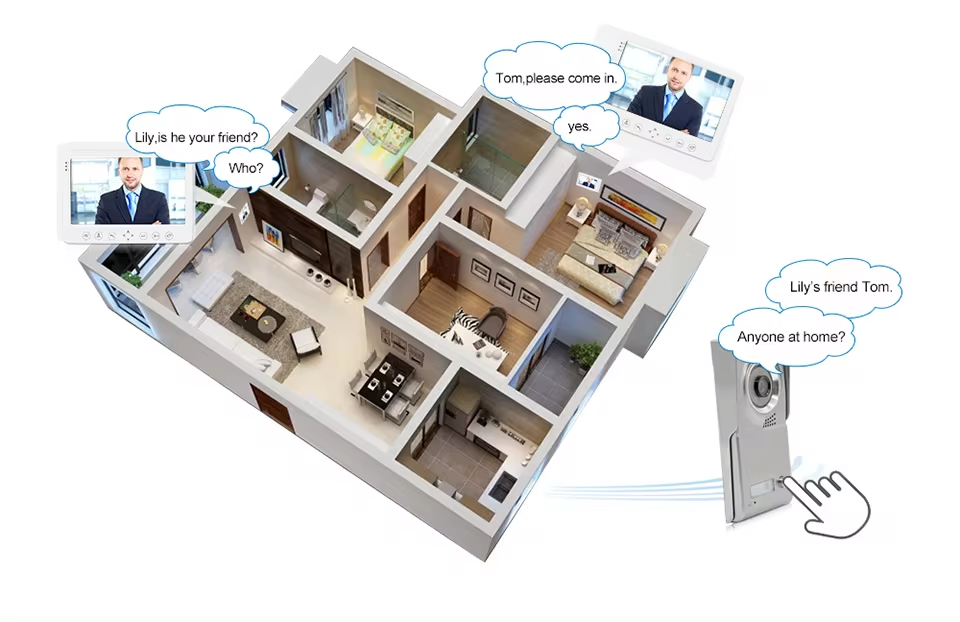
Implementing an IP-based intercom system involves several critical steps to ensure optimal performance, security, and usability. Following best practices can help you avoid common pitfalls and make the most of your investment. Here are the key best practices to consider:
1. Assess Your Needs
Understanding Requirements: Before selecting and deploying an IP-based intercom system, thoroughly assess your organization’s specific requirements. Consider factors such as the size of the facility, the number of entry points, and the level of security needed.
- Scope and Size: Determine the scope of the system by evaluating the areas that require coverage. This includes identifying entry points, communication needs between different areas, and any special requirements for video or audio quality.
- Integration Needs: Assess whether the intercom system will need to integrate with existing systems like access control, security cameras, or building management systems. This will impact the choice of system and its configuration.
2. Choose the Right System
System Selection: Selecting the right IP intercom system involves evaluating various factors such as scalability, feature set, and compatibility with other systems.
- Scalability: Choose a system that can grow with your organization. Ensure that the system allows for easy addition of new devices or expansion as your needs evolve.
- Features and Capabilities: Consider the features that are essential for your needs. This might include video capabilities, remote access, integration with other IP-based systems, and support for mobile devices.
- Compatibility: Ensure that the IP intercom system is compatible with your existing network infrastructure and any other systems you plan to integrate it with.
3. Plan the Network Infrastructure
Network Readiness: The performance of an IP-based intercom system is highly dependent on the quality of the network infrastructure. Proper planning and configuration are essential to ensure reliable operation.
- Network Design: Work with IT professionals to design a network that can support the intercom system’s requirements. This includes evaluating bandwidth, latency, and redundancy to ensure smooth operation.
- Quality of Service (QoS): Implement QoS settings on your network to prioritize intercom traffic. This helps ensure that audio and video signals are transmitted with minimal delay and interference.
4. Install and Configure the System
Installation Process: Proper installation and configuration are crucial for the successful operation of an IP intercom system.
- Professional Installation: Consider hiring experienced professionals to handle the installation. This ensures that the system is set up correctly and that any potential network or integration issues are addressed.
- Configuration: Follow manufacturer guidelines for configuring the system. This includes setting up IP addresses, configuring user permissions, and integrating with other systems. Ensure that all devices are properly connected and functioning.
5. Provide Training and Support
User Training: Ensuring that users are well-trained in operating the IP intercom system is essential for maximizing its effectiveness.
- Training Programs: Develop training programs for users to familiarize them with the system’s features and functionalities. This should cover making and receiving calls, using video capabilities, and managing system settings.
- Technical Support: Provide access to technical support for troubleshooting and resolving any issues that may arise. This could involve working with the system manufacturer or a third-party support provider.
6. Maintain and Update the System
Ongoing Maintenance: Regular maintenance and updates are crucial to ensure the continued performance and security of the IP intercom system.
- Routine Checks: Perform routine maintenance checks to verify that the system is functioning properly. This includes testing audio and video quality, checking network connections, and ensuring all devices are operational.
- Software Updates: Keep the system’s software up to date to address security vulnerabilities and take advantage of new features or improvements. Regular updates help protect against cyber threats and enhance system performance.
- Network Management: Monitor the network for any issues that may impact the intercom system’s performance. Implement network management tools to track performance and address any problems that arise.
7. Ensure Security
System Security: Given the reliance on network infrastructure, securing the IP intercom system is critical to protect against cyber threats and unauthorized access.
- Encryption: Use encryption to secure communication between intercom devices. This helps protect sensitive information and prevent unauthorized interception.
- Access Controls: Implement strong access controls to ensure that only authorized users can access and manage the intercom system. This includes setting up user roles and permissions appropriately.
- Firewall Protection: Use firewalls to protect the network and intercom system from external threats. Regularly update firewall rules and monitor for any suspicious activity.
Case Studies and Applications of IP-Based Intercom Systems
To illustrate the practical benefits and applications of IP-based intercom systems, let’s explore some real-world case studies and scenarios where these systems have made a significant impact.
1. Educational Institutions
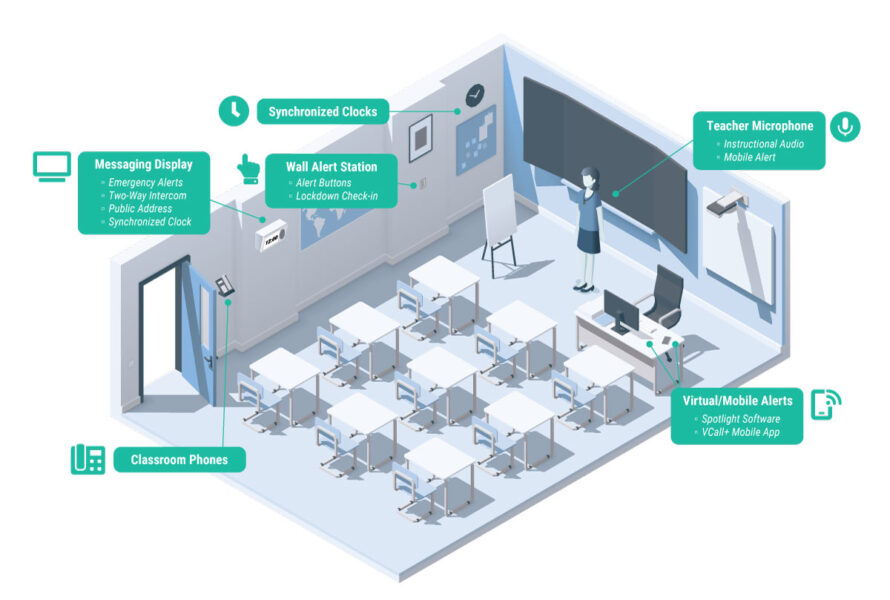
Case Study: Greenfield Academy
Greenfield Academy, a large educational institution with multiple buildings and a sprawling campus, faced challenges with its traditional intercom system. The system’s limitations in terms of scalability and integration with other security measures prompted the school to switch to an IP-based intercom system.
Implementation: The new IP intercom system was integrated with the existing network infrastructure and connected to the school’s security cameras and access control systems. This allowed for seamless communication and coordination between staff, students, and security personnel.
Benefits:
- Enhanced Security: The integration with security cameras enabled visual verification of individuals at entry points, improving overall campus security.
- Improved Communication: Staff could easily communicate across different buildings and manage emergencies more effectively.
- Scalability: The system was easily expandable, allowing for the addition of new intercom stations as needed.
2. Commercial Buildings
Case Study: Downtown Business Complex
In a busy commercial building with multiple tenants and high foot traffic, the management team sought to upgrade their aging analog intercom system to an IP-based solution. The goal was to enhance communication between tenants, building management, and security personnel.
Implementation: The IP intercom system was installed throughout the building, with integration to the building’s existing security and access control systems. Remote access features were also enabled to allow building managers to monitor and manage the system from off-site locations.
Benefits:
- Efficient Communication: Tenants and building management could easily communicate with each other, improving coordination and response times.
- Remote Management: Building managers could oversee the system remotely, making it easier to handle issues and monitor security from anywhere.
- Cost Savings: The use of existing network infrastructure reduced installation costs, and the scalability of the system provided long-term cost savings.
3. Healthcare Facilities

Case Study: City Hospital
City Hospital, a large healthcare facility with multiple departments and extensive security needs, required an intercom system that could support both communication and security functions. The hospital opted for an IP-based intercom system to meet these needs.
Implementation: The IP intercom system was deployed across the hospital, including patient rooms, administrative offices, and security checkpoints. Integration with the hospital’s security cameras and nurse call systems was also part of the implementation.
Benefits:
- Enhanced Patient Safety: The ability to communicate quickly with staff and security personnel improved response times to patient needs and security incidents.
- Streamlined Operations: Staff could manage communication and security from a centralized interface, making daily operations more efficient.
- Integration with Healthcare Systems: The system’s integration with nurse call systems allowed for better coordination of patient care and response to emergencies.
4. Residential Buildings
Case Study: Green Oaks Condominiums
Green Oaks Condominiums, a residential building with multiple units and high-security requirements, sought to upgrade its intercom system to improve communication between residents and the building’s management team.
Implementation: The IP-based intercom system was installed at each entrance and unit, with features including video capabilities and remote access. Integration with the building’s access control system allowed residents to manage entry points from their smartphones.
Benefits:
- Increased Security: Video intercom capabilities provided residents with visual confirmation of visitors, enhancing security.
- Convenience: Remote access allowed residents to manage entry points and communicate with building management from anywhere.
- Integration: The system’s integration with access control and security measures created a cohesive and efficient security solution.
Conclusion
IP-based intercom systems represent a significant advancement in communication and security technology, offering numerous benefits over traditional analog systems. Their scalability, advanced features, and integration capabilities make them an ideal choice for a wide range of applications, from residential buildings to large commercial and industrial facilities.
While there are potential drawbacks, such as reliance on network infrastructure and higher initial costs, the advantages of IP intercom systems often outweigh these challenges. By following best practices for implementation, including assessing needs, choosing the right system, planning network infrastructure, and providing training and support, organizations can successfully deploy IP-based intercom systems that enhance communication, security, and efficiency.
As technology continues to evolve, IP-based intercom systems will likely become even more sophisticated, offering new features and capabilities that further enhance their value. For those looking to invest in a modern and versatile communication solution, IP-based intercom systems provide a forward-thinking choice that can meet both current and future needs.




